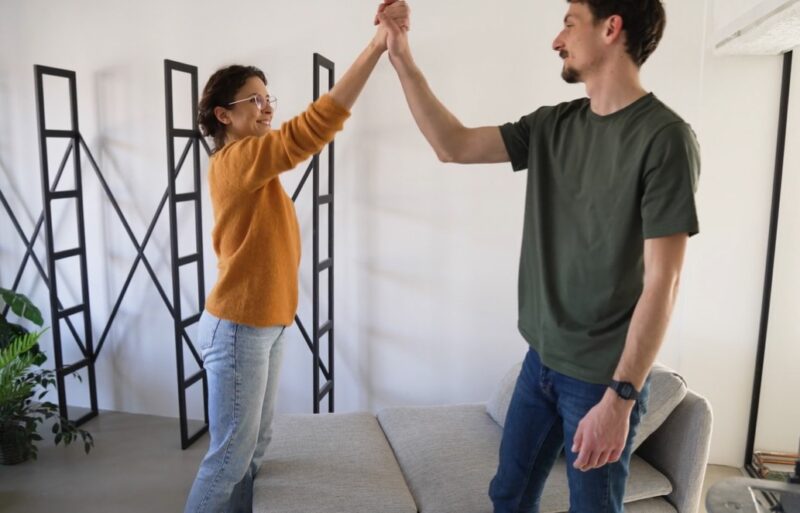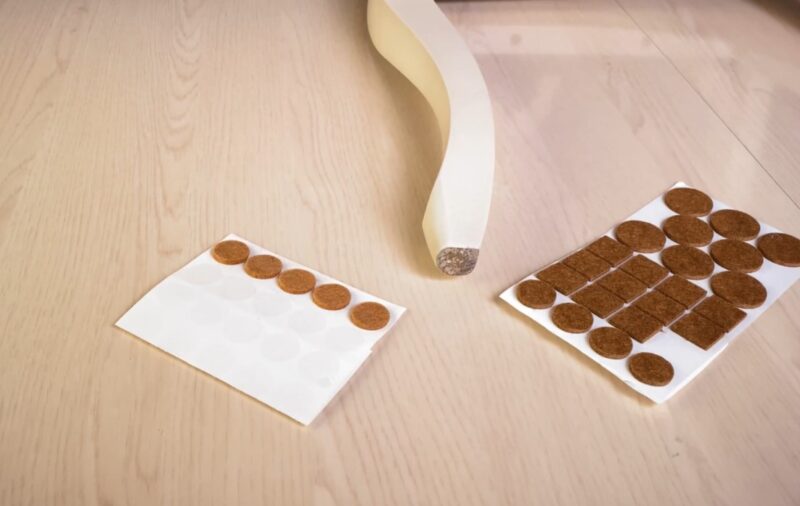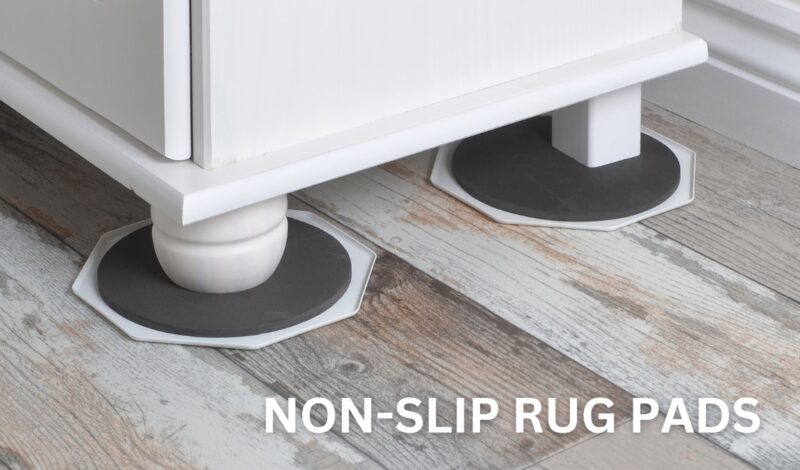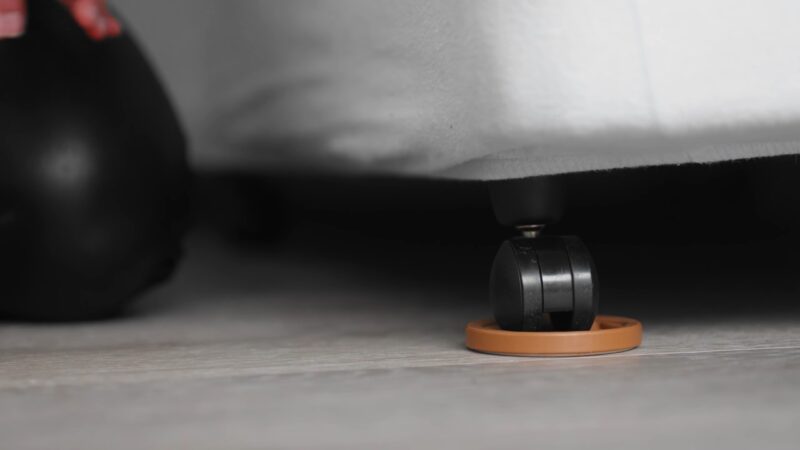Furniture sliding around on the floor can be a nuisance and even a safety hazard. Whether you’re trying to keep your sofa from moving every time you sit down or want to ensure your dining chairs don’t scrape your beautiful hardwood floors, you’ve come to the right place. In this comprehensive article, we will cover everything you need to know about keeping furniture from sliding. We will explore various methods, tips, and tricks that cater to different budgets, preferences, and types of furniture. So, let’s dive right in!
Understand the Causes of Sliding Furniture
Before we discuss solutions, it’s essential to understand why furniture slides in the first place. The main causes include:
- Smooth flooring surfaces: Hardwood, laminate, tile, and linoleum floors provide minimal friction, making it easier for movables to slide around.
- Uneven floors: If your floor isn’t level, furniture legs may not all make contact with the floor, causing instability and sliding.
- Heavy use: Over time, frequently used furniture pieces like sofas and chairs may start to slide due to the repetitive pressure applied when sitting and standing up.
- Inadequate design: Some furniture pieces may have narrow legs or an uneven weight distribution, which can contribute to sliding.
Choosing the Right Solution

The best solution to keep your furniture from sliding will depend on several factors, including your floor type, design, and budget. To select the right option, consider the following:
- Floor-type: Different solutions work better on specific flooring materials. For instance, rubber pads are ideal for hardwood floors, while felt pads are better for tile or linoleum.
- Design: Some furniture pieces may require specialized solutions. For example, larger, heavier items may need anchors or cups, while lighter items might be best served by simple anti-slip pads.
- Budget: Consider your budget when selecting a solution, keeping in mind that some options, like area rugs, may be more expensive than others.
Anti-Slip Pads
One of the simplest and most affordable solutions for preventing movables from sliding is to use anti-slip pads. These pads are available in various materials, including rubber, felt, and silicone. They can be cut to size and attached to the bottom of your furniture legs to provide additional grip on the floor. Here’s how to use them:
- Clean the bottom of the legs to ensure proper adhesion.
- Measure and cut the pads to fit the legs.
- Peel off the adhesive backing and attach the pads to the legs.
- Press firmly to ensure proper adhesion.
Grippers
The grippers are a step up from anti-slip pads, offering a more secure grip on the floor. These grippers are typically made from rubber or silicone and are designed to fit around the entire leg of your furniture piece. They work by increasing the surface area in contact with the floor, preventing sliding and offering added stability. To use the grippers:
- Measure the diameter of your furniture legs to select the right size grippers.
- Clean the legs and floor where the grippers will be placed.
- Stretch the grippers over the legs, ensuring they fit snugly and are positioned evenly.
- Test the stability by gently pushing the furniture to ensure it doesn’t slide.
Rubber or Felt Furniture Cups

These cups are an excellent solution for heavier furniture pieces, such as sofas or large cabinets. They are designed to cradle the furniture legs, evenly distributing the weight and providing a stable, non-slip surface. The cups are available in rubber and felt, with rubber cups being ideal for hardwood floors and felt cups working better on tile or linoleum surfaces. To use these cups:
- Measure the diameter of the legs to select the right size cups.
- Clean the legs and floor where the cups will be placed.
- Place the cups under each leg, ensuring they are centered and secure.
- Test the stability by gently pushing the furniture to make sure it doesn’t slide.
Anchors
For added safety, particularly in homes with children or pets, consider using furniture anchors. These devices secure the movables to the wall, preventing tipping and sliding. Anchors are typically made of metal or heavy-duty plastic and come with screws and brackets to attach to both the furniture and the wall. To install these anchors:
- Identify a secure wall stud to anchor your furniture.
- Measure and mark the appropriate height on the furniture and the wall.
- Attach the brackets to the furniture and the wall, following the manufacturer’s instructions.
- Use the provided straps or cables to connect the brackets, ensuring a secure connection.
Area Rugs and Non-Slip Rug Pads

Using an area rug is not only a stylish solution but also an effective way to prevent furniture from sliding. Placing an area rug beneath your furniture adds friction, keeping it securely in place. Additionally, area rugs protect your floor from scratches and wear. To enhance the anti-slip properties of your area rug, use a non-slip rug pad underneath. These pads are typically made of rubber, felt, or a combination of both materials and come in various sizes to fit your rug. To use an area rug and rug pad:
- Measure your furniture and room dimensions to choose the right size rug.
- Select a non-slip rug pad that matches the size of your area rug.
- Lay the rug pad on the floor, followed by the area rug on top.
- Position your furniture on the rug, ensuring all legs are in contact with the rug.
If you’re planning on painting your living room to give it a fresh look, it’s important to know the proper drying time to prevent any mishaps, and you can find more information on that at a relevant website.
DIY Solutions
If you’re on a tight budget or prefer a homemade solution, consider the following DIY options:
- Hot glue: Apply a layer of hot glue to the bottom of your furniture legs, creating a non-slip barrier between the leg and the floor.
- Old yoga mat: Cut pieces from an old yoga mat and attach them to the bottom of your furniture legs for added grip.
- Tennis balls: Cut a small slit in a tennis ball and fit it over your furniture legs to create a non-slip surface.
Maintaining Your Anti-Slip Solutions
Proper maintenance is essential to ensure the longevity and effectiveness of your anti-slip solutions. Regularly inspect your furniture pads, grippers, or cups for wear and replace them as needed. Vacuum and clean area rugs and rug pads regularly to remove dirt and debris, which can reduce their grip. For anchored furniture, check the connections periodically and tighten them if necessary.
Final Words
Keeping your furniture from sliding not only protects your floors but also improves the safety and functionality of your living space. By understanding the causes of sliding furniture and choosing the right solution for your specific needs, you can create a stable, secure, and stylish home environment.
Remember to maintain your chosen solution regularly to ensure its effectiveness and longevity. With the right approach and a little effort, you can enjoy a stable and slide-free home.

